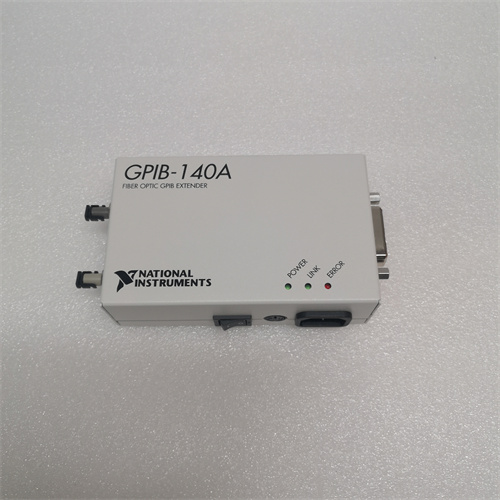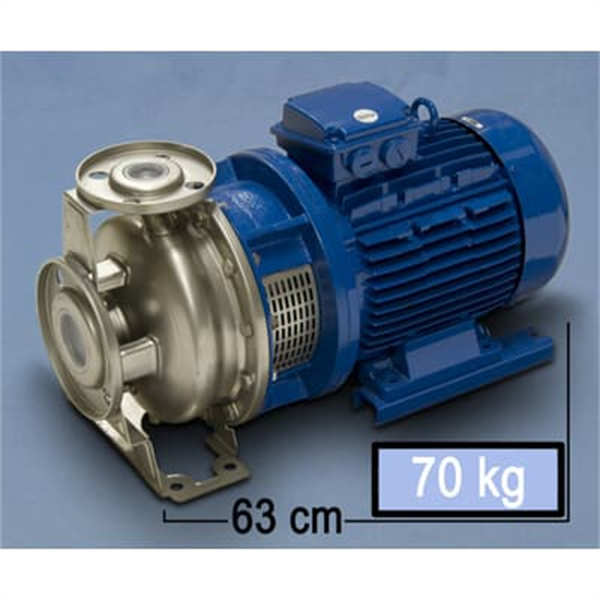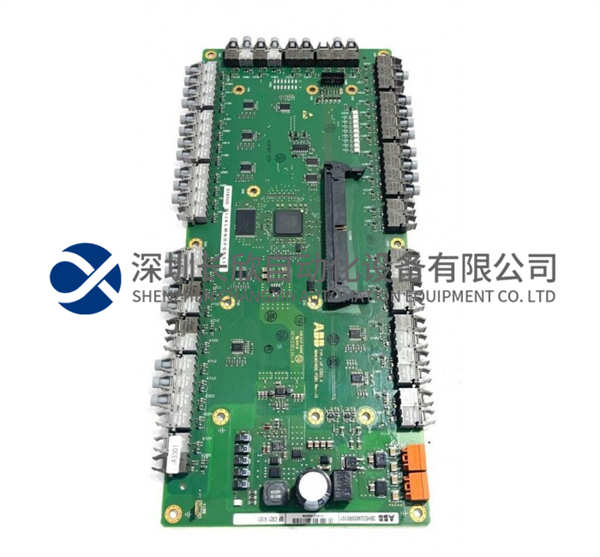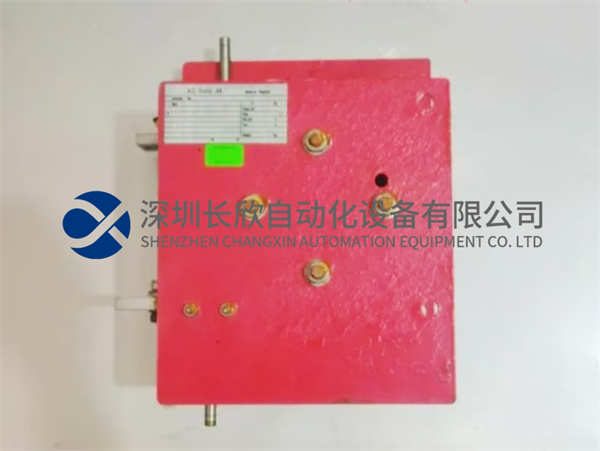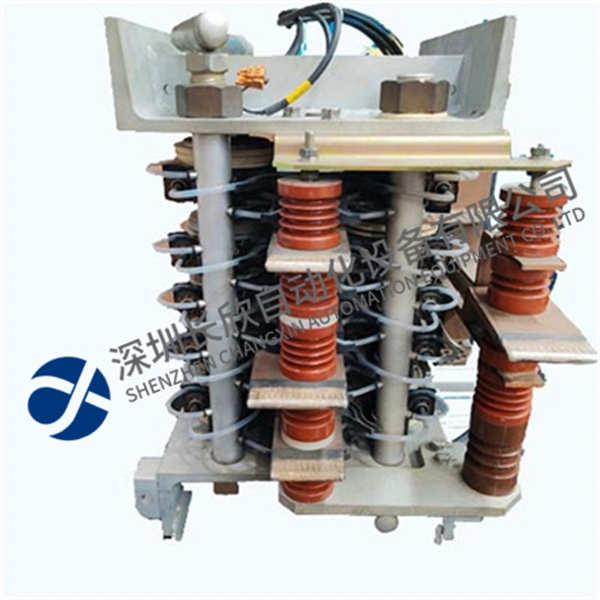描述
NI GPIB-140A是National Instruments(NI)生产的一款基于GPIB(General Purpose Interface Bus,通用接口总线)标准的控制器模块,广泛应用于测试测量、工业自动化、实验室设备控制等领域。以下为该产品的详细介绍:
核心功能
GPIB通信控制
支持IEEE-488.2标准协议,可与示波器、信号发生器、频谱分析仪等支持GPIB接口的仪器设备通信,实现数据传输、参数配置和远程控制。
通过GPIB总线实现多设备级联,最多可连接26台设备(扩展后),支持集中式管理。
高速数据采集与传输
支持1.1 Mb/s(IEEE 488.1)或2.8 Mb/s(HS488)高速传输速率,满足实时性要求高的应用场景(如生产线自动化测试)。
提供可编程中断和DMA传输功能,优化数据传输效率。
多场景应用支持
测试测量:用于自动化测试系统(ATE),实现仪器设备的自动测试和数据采集。
工业自动化:集成于生产线控制系统,实现设备监控与工艺参数调节。
实验室控制:连接实验室仪器,支持科研实验的自动化执行与数据记录。
技术参数
物理规格
尺寸:约22.2 cm×14.5 cm×5.1 cm(不同版本可能略有差异)。
重量:约1.2 kg(典型值)。
防护等级:IP20(适用于室内环境)。
电气特性
电源要求:100-240 VAC,50/60 Hz,功耗约250W。
输出电流:24 mA(典型值)。
电压:240 VAC(标准版本)。
通信接口
传输距离:标准GPIB电缆最长20米,通过光纤扩展器(如NI GPIB-140A光纤版)可延长至1公里。
兼容性:兼容NI其他硬件和软件产品(如LabVIEW、LabWindows/CVI),支持无缝集成。
产品优势
高可靠性与稳定性
采用工业级设计,支持长时间稳定运行,适用于高负荷、高要求的工业环境。
光纤扩展器版本具备低延迟、高带宽、强抗干扰能力,确保信号传输的完整性。
灵活扩展性
支持多设备级联,设备数量扩展至26台,满足大规模系统需求。
提供丰富的软件驱动和编程接口(如NI-488.2驱动程序),支持LabVIEW、Python、C/C++等编程语言开发。
易用性与维护性
用户友好的配置工具和界面简化设备部署流程。
模块化设计便于故障排查与部件更换,降低维护成本。
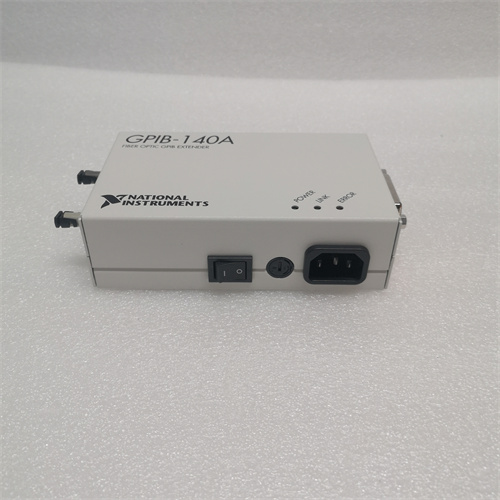
NI GPIB-140A is a controller module based on the GPIB(General Purpose Interface Bus)standard produced by National Instruments(NI).It is widely used in test and measurement,industrial automation,laboratory equipment control and other fields.The following is a detailed introduction of the product:
Core functions
GPIB communication control
Supports IEEE-488.2 standard protocol,can communicate with oscilloscopes,signal generators,spectrum analyzers and other instruments and equipment that support GPIB interface,and realize data transmission,parameter configuration and remote control.
Multi-device cascading through GPIB bus,up to 26 devices can be connected(after expansion),and centralized management is supported.
High-speed data acquisition and transmission
Supports 1.1 Mb/s(IEEE 488.1)or 2.8 Mb/s(HS488)high-speed transmission rate to meet application scenarios with high real-time requirements(such as production line automation testing).
Provides programmable interrupt and DMA transmission functions to optimize data transmission efficiency.
Multi-scenario application support
Test and measurement:used in automated test systems(ATE)to realize automatic testing and data acquisition of instruments and equipment.
Industrial Automation:Integrated into production line control systems to monitor equipment and adjust process parameters.
Laboratory Control:Connect laboratory instruments to support automated execution and data recording of scientific research experiments.
Technical Parameters
Physical Specifications
Dimensions:Approximately 22.2 cm×14.5 cm×5.1 cm(different versions may vary slightly).
Weight:Approximately 1.2 kg(typical value).
Protection level:IP20(suitable for indoor environments).
Electrical Characteristics
Power requirements:100-240 VAC,50/60 Hz,power consumption of approximately 250W.
Output current:24 mA(typical value).
Voltage:240 VAC(standard version).
Communication Interface
Transmission distance:Standard GPIB cable up to 20 meters,can be extended to 1 km through a fiber extender(such as NI GPIB-140A fiber version).
Compatibility:Compatible with other NI hardware and software products(such as LabVIEW,LabWindows/CVI),supporting seamless integration.
Product Advantages
High reliability and stability
Adopting industrial-grade design,it supports long-term stable operation and is suitable for high-load and high-demand industrial environments.
The fiber extender version has low latency,high bandwidth,and strong anti-interference ability to ensure the integrity of signal transmission.
Flexible scalability
Supports multi-device cascading,and the number of devices is expanded to 26 to meet the needs of large-scale systems.
Provides a wealth of software drivers and programming interfaces(such as NI-488.2 driver),and supports development in programming languagessuch as LabVIEW,Python,and C/C++.
Ease of use and maintainability
User-friendly configuration tools and interfaces simplify the device deployment process.
The modular design facilitates troubleshooting and component replacement,reducing maintenance costs.

